Latest Posts
Micron declared New Fab 10 Factory Goes into Operation
Micron held an opening ceremony on 14th for the completion of its expansion of the Fab 10A plant, which locates in Singapore. Micron officially announced that the new factory will begin production in the latter half of 2019. It is reported that Micron already has two 3D NAND plant in Singapore, namely Fab 10N and Fab 10X. Newly built in 2018, the new Fab 10A plant is mainly used to produce 3D NAND.
Distribution of Micron Fab Plant
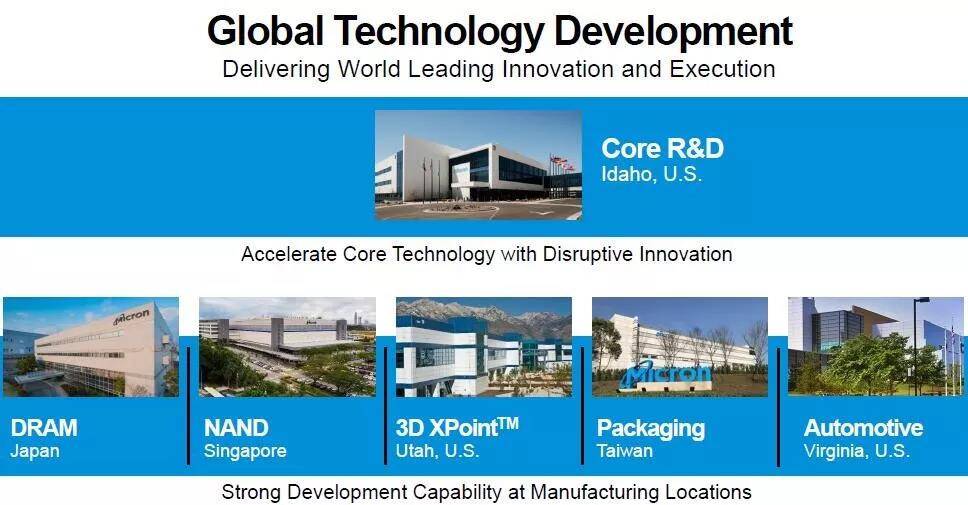
Micron’s new Fab 10A plant in Singapore has been put into production, the follow-up capacity plan has received much attention!
In the first half of 2019, smartphone shipment has dropped 4.4% worldwide, and 4.3% in Chinese market. PC shipment has also fell 1.6%. With the data center’s inventory adjustment period before the arrival of 5G, the NAND Flash market is in an oversupply market condition, resulting a 32% sharp decline in the price of consumption type NAND Flash.
According to hugdiy.com data, Micron’s NAND market share ranked the 4th in the second quarter of 2019, and the follow-up capacity plan of the new plant has received much attention. In the first half of 2019, NAND Flash industry has encountered cold winds and difficulties. Now that Micron announced the new Fab 10A plant in Singapore will be put into use to produce 3D NAND in the second half of 2019. This will strike the NAND Flash industry again, which is already in oversupply market conditions, and make the condition worse.
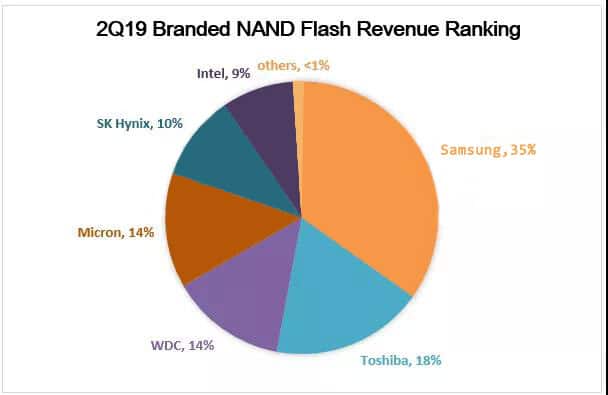
However, Sanjay Mehrotra, CEO of Micron, said that the Singapore plant will adjust capital expenditure and capacity plans according to market demand, and apply it to advanced 3D NAND process technology to further promote 5G, artificial intelligence (AI), autonomous driving and other key technology transformation. Sanjay Mehrotra said that although the industry in the first half of 2019 is facing the challenge of oversupply condition, the demand from terminal end will gradually grow, market performance of the second half year will tend to be normal, and the future industry prospects is positive. 5G, cloud data center, and automatic Driving will increase the demand for DRAM and NAND Flash, and Micron will continue to increase its investment.
Under the influence of Micron’s production reduction strategy, the new factory has limited impact on NAND market supply.
Due to oversupply in the market, the demand and price of NAND Flash both fell in the first half of 2019. Till the 31th May, 2019, Micron’s Q3 revenue of the fiscal year was US$4.788 billion, which dropped 38.6% from a year before and dropped 17.9% from a quarter before. The net profit was US$840 million, which dropped 78% from a year before and dropped 57.4% on from a year before. Operating profit was US$1.01 billion, which dropped 74.9% from a year before and dropped 52.4% from a quarter before.
Micron’s Quarterly Revenue
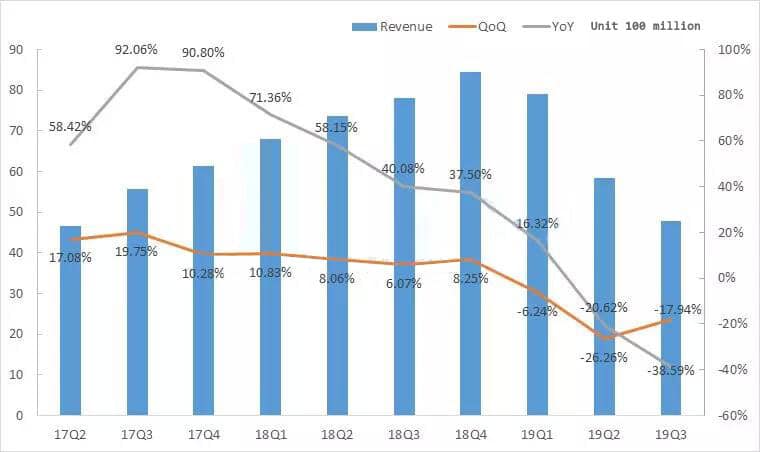
Micron 2019 fiscal year Q3: until May 31, 2019
Micron’s Q3 financial report data shows that the DRAM revenue decreased by 19% from the previous month and decreased by 45% from a year before; ASP decreased by 20% from the previous month, and shipments were balanced from a year before. NAND revenue decreased by 18% from the previous month and 25% from a year before; ASP fell by approximately 15% from the previous month and shipments fell by 5% from a year before. In addition, Micron’s inventory is still at a high level, inventory in the Q3 fiscal quarter of 2019 reached 4.9 billion US dollars, which increased 46%.
Micron’s quarterly inventory changes
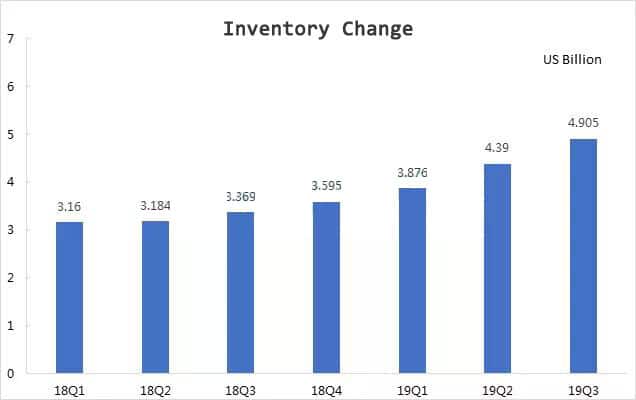
Micron expects NAND demand to grow by 35% in 2019, and industry Bit supply growth will exceed 35%. In order to further promote the balance between supply and demand, Micron will increase the wafer reduction from 5% to 10%, and will reduce capital expenditure in 2020. Under the influence of Micron’s production reduction strategy, the new plant’s production has limited impact on the NAND market supply, and has little impact on the market in the short term.
128-layer stacking battle has started, the new plant will help Micron’s 3D NAND development.
For now, the new Fab10A plant mainly based on expanding the clean room space in the initial state, enhancing the flexible space of the factory production, helping the transition of 3D NAND technology. It is not expected to increase additional wafer capacity output, so it will not have a big impact on the NAND Flash market supply for now.
In 3D NAND technology, Samsung, Toshiba Memory, Western Digital, Micron, SK Hynix and other original manufacturers still mainly produce 64-layer/72-layer 3D NAND in the first half of 2019, and will start to transit to 96-layer 3D NAND technology from the second half of the year. And develop to the next generation of 3D NAND technology with more than 100 layers actively.
Advanced technology is the core competitiveness. Since the original factory entered the 64-layer stack, 3D NAND technology has become more and more mature, and the cycle of updating iterations has been shortened. According to the plan, 3D NAND technology is expected to break through 500-layer stack in the next 3 years, and the development speed is beyond market expectation.
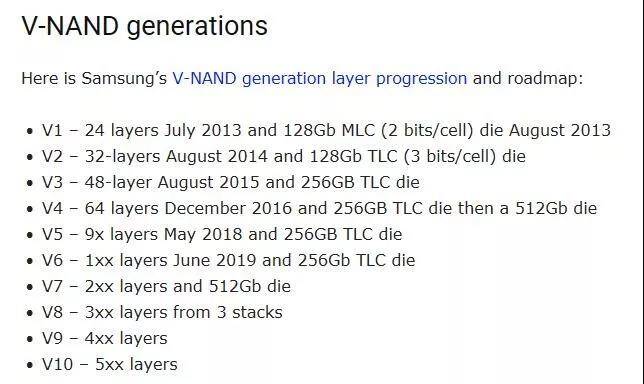
On June 26th, SK Hynix launched the first 128-layer TLC 4D NAND Flash in the industry. It has a 40% increase in productivity and a capacity of 1Tb. The company is developing the next generation of 176-layer 4D NAND, which is expected to be put into production by the end of 2020. In addition, Samsung also announced the first 100+ layer and single-stack (Single-stack) design of the sixth generation of V-NAND, and has begun the mass production of 250GB SATA SSD based on this technology, it also plans to expand its sixth-generation V-NAND production in Pyeongtaekto South Korea to ensure its leading position in the industry.
Micron’s 3D NAND Technology
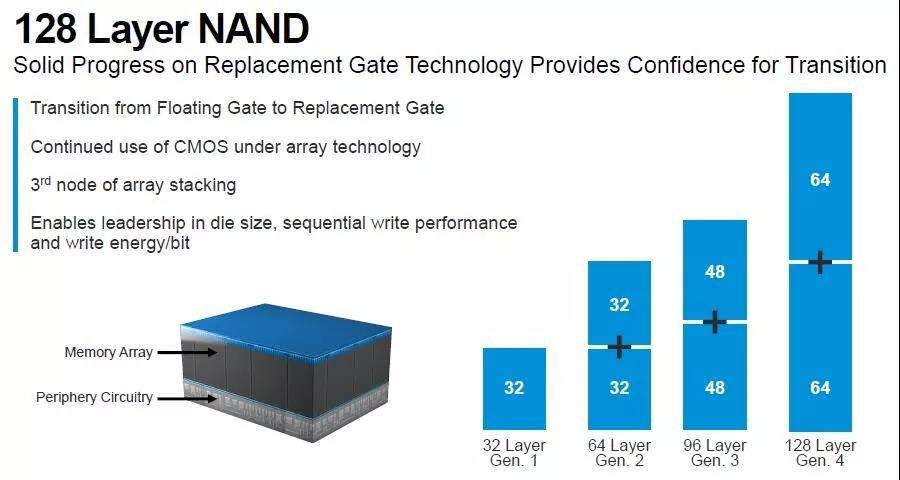
Facing with the rapid development of its competitors, Micron put its third-generation 96-layer 3D NAND into mass production, and the next generation will be advanced to 128-layer 3D NAND, which is a 64+64-layer structure, a transition from Floating Gate to Replacement Gate and continues to use CMOS architecture. It will grow into a 200-layer stack in the future. The expansion of the clean room in Micron’s Fab10A new plant will help Micron transit quickly to a new generation of 3D NAND technology and seize market opportunities.











Leave a comment